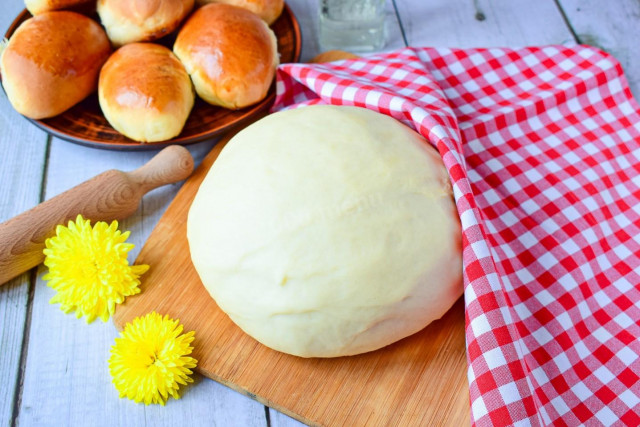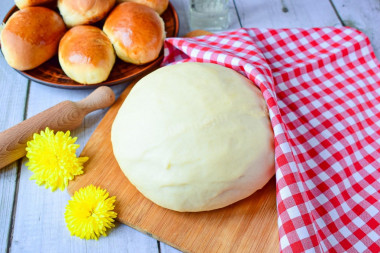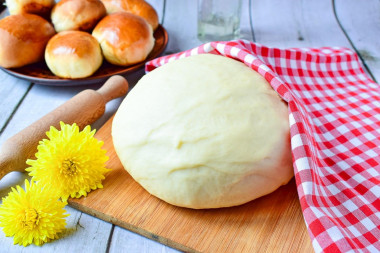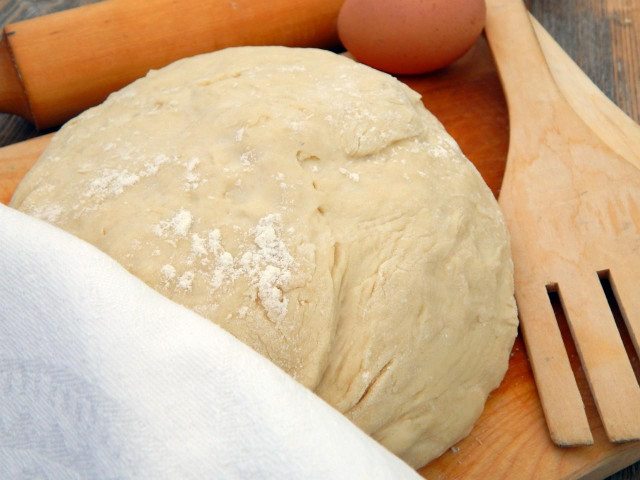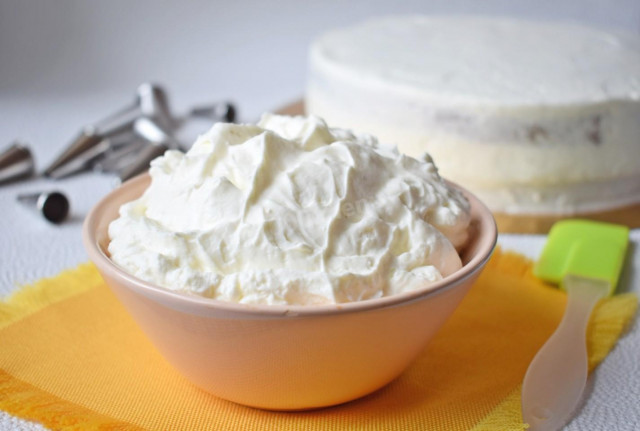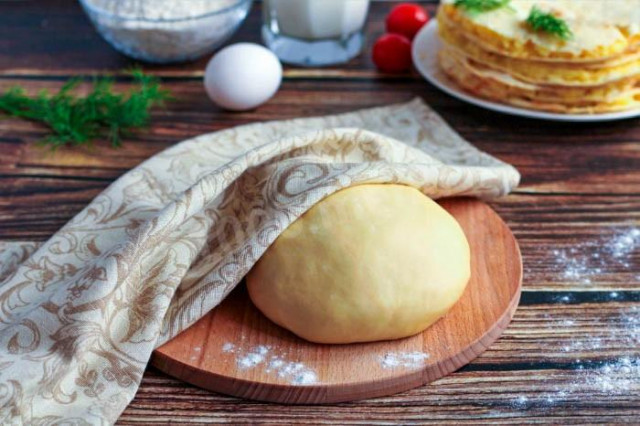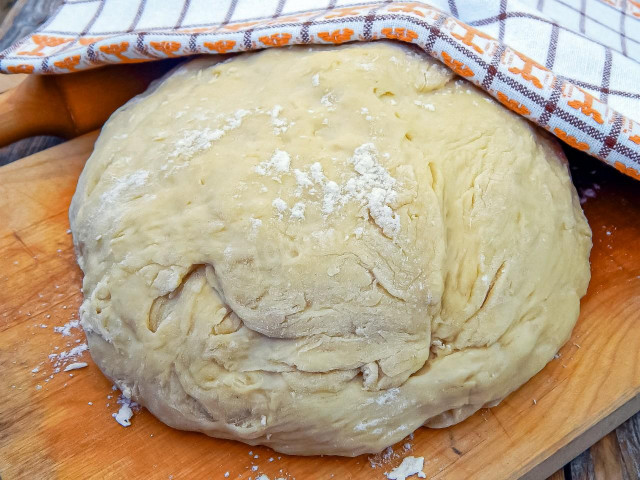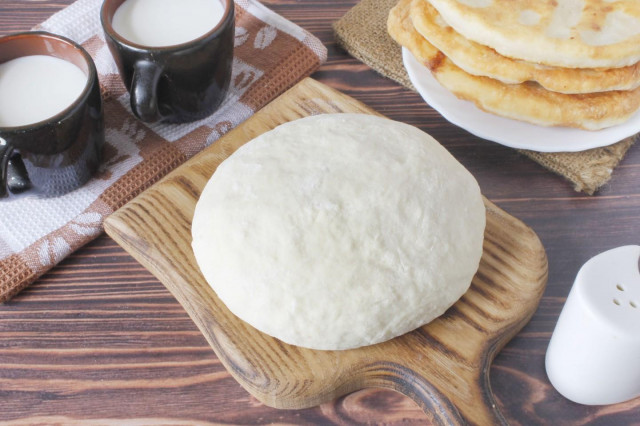Composition / ingredients
Step-by-step cooking
Step 1:
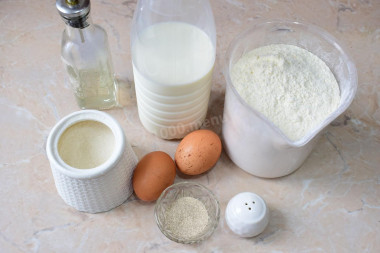
How to make soft airy yeast dough for pies? Prepare the necessary ingredients for this. Sift the flour through a sieve to saturate it with oxygen. Thanks to sifting, the finished products will be more lush and softer.
Step 2:
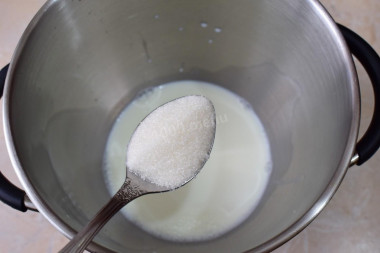
In order for the yeast to start its work faster and more actively, heat the milk to a warm state. Add salt and sugar to the milk.
Step 3:
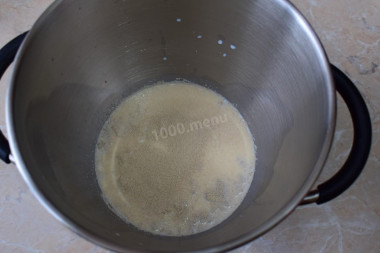
Then pour in the dry yeast and mix everything.
Step 4:
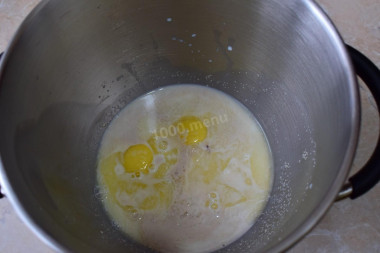
Break eggs into a bowl and pour vegetable oil. Mix the eggs with the milk mass.
Step 5:
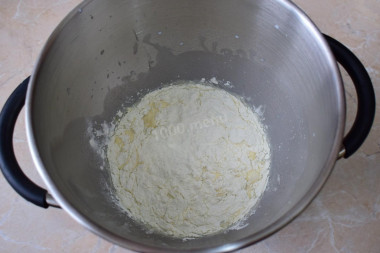
Start introducing the sifted flour into the dough. It is not necessary to pour out all the flour at once. Pour in half of the amount indicated in the recipe. Mix it into the dough. At this stage, the dough is viscous and a little runny. Pour the second half of the dough gradually, letting it interfere with the dough.
Step 6:
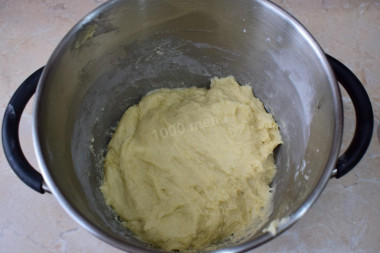
Focus not on the amount of flour, but on the consistency of the dough. The finished dough will become soft and will almost not stick to your hands. Leave it in the bowl. Cover with a towel and put it in a warm place for 1 hour for the approach.
Step 7:
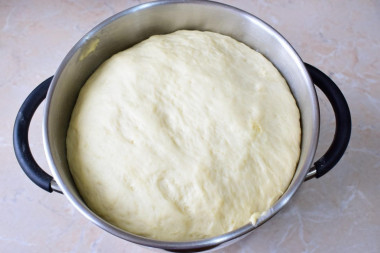
The dough has increased in size several times. Yeast and heat have done their job.
Step 8:
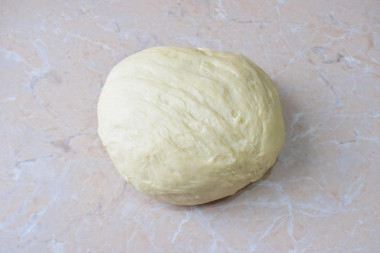
Knead the dough a little and use it to make pies or pies. To prevent the dough from asking for flour anymore, lubricate your hands with vegetable oil.
Step 9:
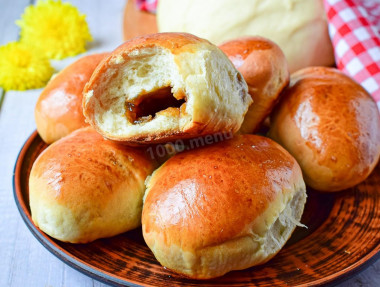
Pies from this dough can be baked in the oven or fried in a frying pan. And the filling can be very diverse to your taste. Cook with pleasure!
How do I know if an egg is fresh? Break it into a separate container. First of all, there should be no unpleasant smell. The protein of fresh eggs will be transparent and clean. The yolk should not spread and will be shiny, convex, homogeneous.
The liquid in which yeast is bred should be pleasant to the touch, no higher than 40 degrees. Why is this important? In a warm environment, yeast is well activated, in a hot one it will die, and in a cold one it simply will not work. To avoid unpleasant surprises, check the yeast before mixing with the rest of the ingredients. Pour a little warm milk into a bowl, stir in the yeast. Cover the bowl with a kitchen towel and put it in a warm place without drafts for 10-15 minutes. During this time, a foam yeast cap should appear on the surface of the sponge. If this did not happen, then the fermentation process has not started (the yeast is overdue or spoiled). In this case, it is worth taking other yeast, otherwise baking will not work.
Be prepared for the fact that you may need more or less flour than indicated in the recipe. Focus not on the amount of flour, but on the desired consistency of the dough. To avoid mistakes, read about flour and its properties!
Caloric content of products possible in the composition of the dish
- Whole cow's milk - 68 kcal/100g
- Milk 3.5% fat content - 64 kcal/100g
- Milk 3.2% fat content - 60 kcal/100g
- Milk 1.5% fat content - 47 kcal/100g
- Concentrated milk 7.5% fat content - 140 kcal/100g
- Milk 2.5% fat content - 54 kcal/100g
- Chicken egg - 157 kcal/100g
- Egg white - 45 kcal/100g
- Egg powder - 542 kcal/100g
- Egg yolk - 352 kcal/100g
- Ostrich egg - 118 kcal/100g
- Whole durum wheat flour fortified - 333 kcal/100g
- Whole durum wheat flour, universal - 364 kcal/100g
- Flour krupchatka - 348 kcal/100g
- Flour - 325 kcal/100g
- Granulated sugar - 398 kcal/100g
- Sugar - 398 kcal/100g
- Vegetable oil - 873 kcal/100g
- Salt - 0 kcal/100g
- Dry yeast - 410 kcal/100g

